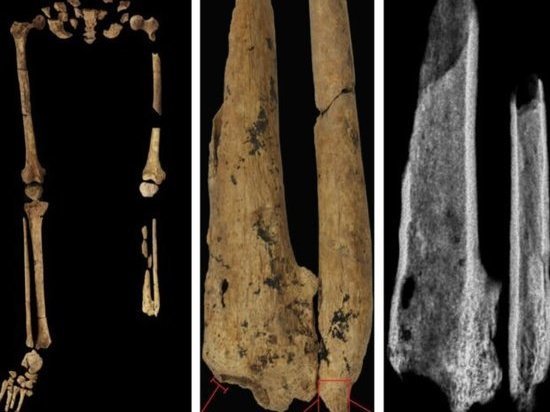An ancient skeleton without a leg changed the idea of human history
[ad_1]

Discovered by Australian and Indonesian archaeologists in a remote cave on the island of Borneo, a 31,000-year-old skeleton missing the lower left leg is the earliest known evidence of surgery, experts say. This discovery, scientists say, changes the idea of human history.
A 31,000-year-old skeleton missing the lower left leg found in a remote Indonesian cave is believed to be the earliest known evidence of surgery, according to a new study that experts say is reshaping human history.
As tells The Guardianan expedition team led by Australian and Indonesian archaeologists came across the skeletal remains while excavating a limestone cave in East Kalimantan in search of ancient rock art in 2020.
The find proved to be evidence of the earliest known surgical amputation, predating other discoveries of complex medical procedures in Eurasia by tens of thousands of years.
By measuring the age of the tooth and burial sediment using radioisotope dating, scientists estimated the age of the remains at about 31,000 years.
Paleopathological analysis of the remains revealed bony growths on the lower leg of the left leg, indicative of healing and suggesting a surgical amputation of the leg several years before burial.
Dr. Tim Maloney, a researcher at the Australian Griffith University who led the excavation, said the discovery was “an absolute dream for an archaeologist.”
The scientist said that the research team, which included scientists from the Indonesian Institute of Archeology and Conservation, was studying ancient cultural deposits when they crossed stone marks in the ground, discovering a burial site.
After 11 days of excavation, they found the skeleton of a young hunter-gatherer with a healed stump where the lower left leg and foot had been severed.
Maloney said the nature of the healing, including the clean stump, showed that it was caused by an amputation and not an accident or animal attack.
“Hunter survived not only as a child, but as an adult amputee in this rainforest environment,” says Tim Maloney. “It is important that not only is there no infection in the cult, but there is also no characteristic crushing.”
The study was published in the journal Nature.
Prior to this discovery, according to Maloney, it was widely believed that amputation was a guaranteed death sentence until around 10,000 years ago, when surgical procedures advanced with the development of large, settled agricultural societies.
The previous oldest evidence of a successful amputation was a 7,000-year-old skeleton of an elderly farmer from Stone Age France. His left arm was amputated above the elbow.
“This discovery greatly changes the known history of medical intervention and human knowledge,” says Maloney. “This means that the ancient people … mastered the complex surgical procedures that allow this person to survive after the removal of the foot and leg.”
Dr. Maloney said that the Stone Age surgeon had to have a thorough knowledge of anatomy, including veins, vessels and nerves, to avoid fatal blood loss and infection. A successful operation involves some form of intensive care, including regular post-surgery disinfection, he said.
Professor Emeritus Matthew Spriggs of the Australian National University School of Archeology and Anthropology, who was not involved in the study, says the discovery was “an important rewrite of the history of our species” that “re-emphasizes that our ancestors were just as smart as we are.” , with or without the technologies we take for granted today.”
Professor Spriggs says it’s not surprising that Stone Age humans could understand the inner workings of mammals through hunting and treat infections and injuries. “We tend to forget that modern people like us 30,000 years ago … had their own intellectuals, their own doctors, their own inventors,” he said.
According to him, they had to experiment with herbal medicines and other treatments to stay alive. “Any tropical rainforest dweller today, usually combining hunting and gathering with forms of agriculture, has an extensive pharmacopoeia that must have been developed over millennia.”
[ad_2]
Source link








